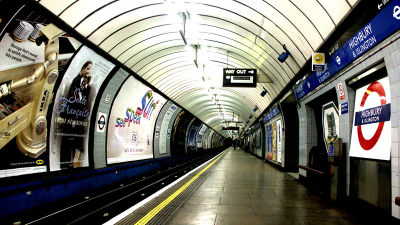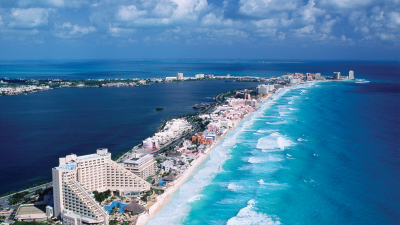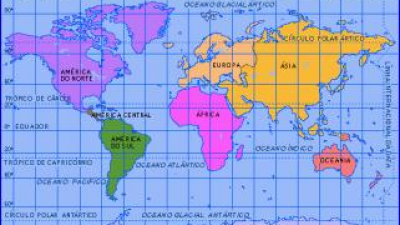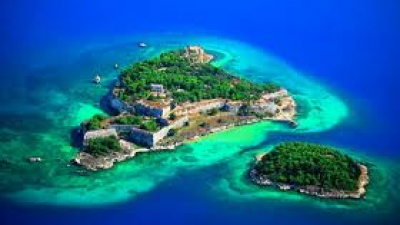The countries with the best education systems
|
NEWS
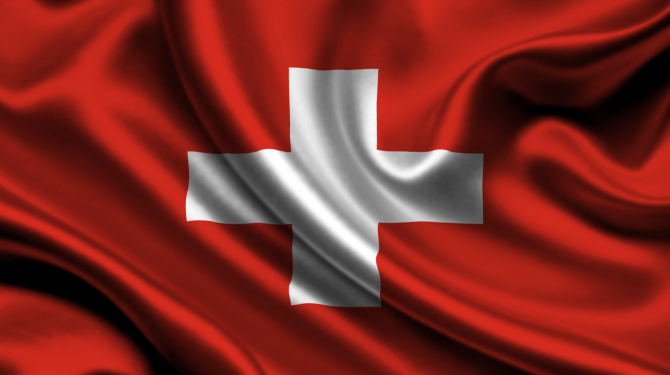
Source: listas.20minutos.es
Education can be defined as: The multidirectional process through which knowledge, values, customs and ways of acting are transmitted. Education is not only produced through the word, it is present in all our actions, feelings and attitudes. The bonding process and cultural, moral and behavioral awareness. Thus, through education, new generations assimilate and learn the knowledge, rules of conduct, ways of being and ways of seeing the world of previous generations, also creating new ones. Process of formal socialization of the individuals of a society Pillar of every society, education is the most important, and it is necessary to have correct systems that ensure a quality education, however, in many countries, there are very poor quality educational systems, and others have very good, denoting themselves in their society. The list contains the 20 countries with the best educational systems
TOP 20:
Russia
Russian culture is a hybrid generated from the customs of so many civilizations, which shaped this great multicultural state and the result of its development during several centuries in the Second World War, and other wars by territory. Being strongly rooted in the culture of the early East Slavs. Back in 1890, a new art form boomed, the Russian Vanguard. However, it developed within the Soviet regime when the government took control of all artistic activity. The policy of the USSR regarding culture was controversial: on the one hand, there was the desire (politically motivated) to create an exclusively "Soviet" people, expressed in the notion of Soviet culture and exemplified by socialist Realism. On the other hand, there were recurrent campaigns for the preservation of national cultures: each ethnicity had its own "great autochthonous writers" and folkloric cultural practices were officially supported.
TOP 19:
Slovakia
A rare and interesting tourist curiosity in eastern Slovakia is the large number of churches in rural areas built of wood, which bear some similarities to the stavkirke of Norway.
TOP 18:
Hungary
Hungarian culture has evolved over the centuries receiving Turkish, Latin and Germanic influences among many others. See also: Hungarian painting - Hungarian cinema - Hungarian music - Hungarian literature - Hungarian dance In terms of architecture, in Hungary you can see the largest synagogue in Europe (Dohany Street Synagogue), the European medicinal bath more large (The Széchenyi medicinal bath), one of the largest basilicas in Europe (Esztergom Basilica), as well as the largest Christian necropolis in the world (in Pécs), apart from those in Italy. Historicism and Art Nouveau are the most important architectural styles in Hungary, with the architect Ödön Lechner in the last one.
TOP 17:
U.S
American public education is operated by state and local governments, regulated by the United States Department of Education. It is mandatory that children attend school from six or seven years (usually kindergarten or the first grade of primary school) until they turn eighteen (usually until the twelfth grade, the end of the high school); Some states allow students to leave school at sixteen or seventeen. Approximately 12% of children are enrolled in private schools, while 2% receive homeschooling. There are multiple private and public institutions of higher education, as well as community colleges with open admission policies. Of the people over the age of twenty-five, 84.6% graduated from high school, 52.6% attended a school, 27.2% obtained a bachelor's degree and 9.6% obtained a graduate degree. The literacy rate is approximately 99%. The UN assigns the country an education index of 0.97, the 12th highest in the world. According to Unesco, the United States is the second country with more institutions of higher education in the world, with a total of 5,758 and an average of more than 15 for each state. The country also has the largest number of university students in the world, amounting to 14,261,778, that is, almost 4.75% of the total population. Finally, here are some of the most prestigious and famous universities in the world. Harvard, Yale, Berkeley, Stanford and the Massachusetts Institute of Technology are considered the best universities by several publications.
TOP 16:
Belgium
It is estimated that 98 percent of the adult population is literate. Education is compulsory between the ages of six and eighteen, but many Belgians continue to study until approximately 23 years of age. In 1999, Belgium had the third highest proportion of young people aged 18 to 21 enrolled in higher education among all OECD countries, with 42 percent. However, in recent years, the main issue of concern is functional illiteracy. In the period 1994-1998, 18.4 percent of the Belgian population lacked reading habits. Reflecting the historical political conflicts between free thinking and the Catholic sectors of the population, the education system in each community is divided into a secular branch controlled by communities, provinces, or municipalities, and a religious branch -in its Catholic majority - subsidized and controlled by both communities and religious authorities (mostly dioceses). However, it should be noted that - at least in the case of Catholic schools - religious authorities have very limited power.
TOP 15:
Germany
The responsibility for educational supervision rests primarily with individual states, while the government has only a secondary role. The kindergarten is optional, and provides education for all children between three and six years, after which schooling is compulsory for at least ten years.68 Primary education usually lasts four years and public schools are not stratified in this stage. In contrast, secondary education includes four types of schools based on the student's ability as determined by the teacher's recommendations: the Gymnasium, which includes the most intelligent children, prepares students for college and university. assistance lasts eight or nine years, depending on the state; The Realschule has a wider range of special interest for intermediate students and lasts six years; The Hauptschule prepares students for professional education, and the Gesamtschule combines the three approaches. The PISA report assesses the skills of 15-year-old students in the countries of the Organization for Economic Cooperation and Development and a number of partner countries. In 2006, German schoolchildren have improved their position compared to previous years, ranking (statistically) at a significantly higher level than the average (range 13) in the sciences, and not significantly above or below the average in mathematics ( range 20) and reading skills (range 18). The socio-economic differences are high, and the performance of students is more dependent on this factor than in most other countries. To enter a university, high school students need to pass the Abitur exam, similar to Advanced Level, it is also possible to enter the university with a Fachabitur, which is a specialized Abitur, for example, in economics. Students who hold a diploma from a vocational school can enter a University of Applied Sciences. Most German universities are state-owned. In all universities you have to pay administrative taxes, which are between 50 and 200 euros. In some States you also have to pay for tuition fees amounting to 500 euros per semester. Universities are recognized internationally, which indicates the high level of education in the country. According to QS World University Rankings 2013, thirteen German universities are among the top two hundred best universities in the world.
TOP 14:
Poland
Polish culture has been influenced by both Eastern and Western culture. Currently, this is evident in its architecture, folklore and art. Poland is the birthplace of several well-known personalities, such as Marie Curie, Frédéric Chopin, and Nicolaus Copernicus, Pope John Paul II, Lech Wałęsa, Joseph Conrad and Shimon Peres, among others. In fact, Poland had great personages of the history in time of when it was divided, reason why great personages adopted German nationality instead of Polish. One case is, for example, that of Daniel Gabriel Fahrenheit, who was born in Gdansk but adopted German nationality.
TOP 13:
Australia
School attendance is mandatory from 6 to 15 years at least throughout Australia (up to 16 in South Australia and Tasmania, and up to 17 in Western Australia), contributing to the level of literacy in the adult population is 99 % approximately. Government subsidies have made possible the establishment of the 38 Australian universities and, although several of them are private, most receive government contributions. There is a system of professional training based on the state, known as TAFE Institutes (Technical and Further Education), and many trades train personnel to prepare them as new traders. Approximately 58% of Australians between 25 and 64 years of age have a tertiary or university degree; The university population index of people who are between the ages specified above - 49% - is the highest among the countries that make up the Organization for Economic Cooperation and Development. Life expectancy is 80.9 years (the fourth highest in the world).
TOP 12:
Denmark
Education in Denmark is free for all citizens and is of very high quality. The Danish education system is characterized by a series of principles: there are nine years of compulsory education, but there is no compulsory schooling; Education is considered a training tool that promotes democracy and equality, so that the public school is a unitary school in which students are not separated according to, for example, their aptitudes or their social origin. Classes not only focus on academic knowledge, but also ensure that students develop a capacity for dialogue and collaboration. From preschool they are taught to work in groups and to solve problems in a peaceful and dialoguing way. The main objectives of Danish education are to provide official training, that is, to give access to certain types of occupations or higher education, to as many people as possible and to achieve greater coherence between the adult education system and the education system. professional improvement. To control that these objectives are met, there is the National Institute of Evaluation, an autonomous body dependent on the Ministry of Education whose mission is to monitor and evaluate all educational areas, with the exception of the so-called free primary schools. The public school is the responsibility of the municipalities. The Ministry of Education sets the objectives, the areas of knowledge and competences, and the levels of exigency of the final exams, publishes orientative study plans, etc. The municipal plenary sessions are responsible for the economy and the inspection of the schools of the municipality. The influence of the parents in the public school is manifested formally through the school council, composed of between five and seven representatives of the parents, two of the employees and two of the students. The school council, whose period of validity is four years, is responsible for ensuring the smooth running of the school, establishing the principles for its operation and approving budgets and regulations. Secondary education is the responsibility of the provinces, supervised by the Ministry in educational content and the completion of the revalidation examination. Regarding higher education, each center determines the curriculum of each career within the frameworks established by the Ministry of Education or by the Ministry of Science, Technology and Innovation, responsible for long-term higher education. Almost all students are integrated into the education system after one year of preschool education of a voluntary nature for children between five and six years of age before entering the first year of primary school. Some of the fundamental principles of teaching in the public school are: educational differentiation, which involves taking the skills of each student as a starting point for teaching approach, continuous internal evaluation and student participation (this participation is It is implemented through the advice of students who, in schools with courses above the fourth level, are mandatory.) School children can spend their free time before and after school hours in municipal school recreation centers.
TOP 11:
Ireland
It is administered by the Ministry of Education and the Ministry of Employment and Learning, although at the local level it is the responsibility of five education boards, which cover certain geographical areas. The Council for the Curriculum, Examinations and Evaluations (CCEA) is the body in charge of advising the government on what should be taught in the Northern Irish schools, the follow-up of norms and the awarding of degrees.
TOP 10:
Glen
Each of the provinces and territories are responsible for education; Each of these systems have similar characteristics, while reflecting the history, culture and geography of each region. The age at which children begin their education ranges from 5 to 7 years, which contributes to an adult literacy rate of 99%. Higher education is also administered by provincial and territorial governments, which provide most of their funding; The federal government awards scholarships, student loans and additional research scholarships. In 2002, 43% of Canadians aged 25 to 64 had a post-secondary education; for those between 25 and 34 years of age, the rate of post-secondary education reached 51%
TOP 9:
Switzerland
Education in Switzerland is very diverse because the country's constitution delegates the authority of the school system to each sub-canton. There are public and private schools, including many internationally renowned schools. In all the cantons, the minimum age to enter primary school is six years. The elementary school consists of four or six grades, depending on each school. Traditionally, the first foreign language taught in the primaries was one of the other national languages, although in the year 2000 in some cantons English classes were started. At the end of primary school (or at the beginning of secondary school), students are separated into several groups (often three) according to their intellectual abilities. Those who learn faster are enrolled in advanced classes to be prepared for the matura or baccalaureate exam and for more specific studies, 64 while schoolchildren who assimilate knowledge a little more slowly receive an education more suited to their needs.
TOP 8:
New Zealand
The primary and secondary school is compulsory for children between 6 and 16 years old, although most attend after 5 years. There are 13 years of compulsory school and attendance at public schools is free. New Zealand has an adult literacy rate of 99%, and more than half of the population between 15 and 29 years of age is enrolled in some type of higher education. Schooling among the adult population is diverse: 14.2% have a bachelor's degree, 30.4% have a high school diploma, and 22.4% do not have a well-established schooling.
TOP 7:
Holland
Education is divided into schools and different age groups within them, some of them with different educational levels. The schools are divided into public schools or special religious colleges. The PISA Report, which is coordinated by the Organization for Economic Cooperation and Development, placed the Netherlands in ninth place in the world education ranking in 2008, obtaining considerable growth in the Organization's average. Elementary education ranges from 4 to 12 years old. From 5 years is mandatory. Starting at 12, you can choose between a mid-level preparatory education (consisting of four years), continuing general education (consisting of five years), or preparatory scientific education (consisting of six years). Once these studies are completed, you can choose to do tertiary education among which universities are included. Once completed these studies, you can take a master's degree that ends with the average age of 22 years, and then start working. All universities, with the exception of the one in Nyenrode, receive funding from the state. The universities of Amsterdam, Delft, Groningen, Leiden and Utrecht are listed among the 100 best in the world each year
TOP 6:
United Kingdom
Education in the United Kingdom is a decentralized issue, as each country has its own education system. Education in England is the responsibility of the Secretary of State for Children, Schools and Families, although the administration and funding of state schools correspond to local authorities. The universality in education in England and Wales was introduced in 1870 for education primary school and in 1900 for secondary education. Currently, education is compulsory from five to sixteen years of age. Most of the children are educated in schools of the state sector, only a small portion of them study in special schools, mainly for reasons of academic abilities. State schools that are allowed to select students according to their intelligence and academic ability can achieve results comparable to more selective private schools: in 2006, of the ten schools with the best academic performance, two were state grammar schools. Despite a fall in real numbers, the proportion of children in England attending private schools has increased by more than 7%. However, more than half of the students at major universities, Cambridge and Oxford, attended state schools. England has some of the best universities internationally; the University of Cambridge, the University of Oxford, the Imperial College London and the University College of London are ranked among the ten best in the world. According to the TIMSS (Trends in the International Mathematics and Science Study), students in England are the seventh best in mathematics and the sixth in science. The results place the English students ahead of other European countries, including Germany and the Scandinavian countries. Education in Scotland is the responsibility of the Ministry of Education and Learning, with the administration and funding of state schools run by local authorities. Two non-departmental public agencies have a key role in Scottish education: the Scottish Skills and Learning and Teaching Authority of Scotland. Education became compulsory in Scotland in 1496. The proportion of children attending private schools is barely 4%, although it has been increasing slowly in recent years. Scottish students attending Scottish universities do not pay tuition fees or graduate courses, as all these fees were abolished in 2001. The monetary contribution to the universities by the alumni was abolished in 2008. Education in Northern Ireland is administered by the Ministry of Education and the Ministry of Employment and Learning, although at the local level it is the responsibility of five education boards, which cover certain geographical areas. The Council for the Curriculum, Examinations and Evaluations (CCEA) is the body in charge of advising the government on what should be taught in the Northern Irish schools, the follow-up of norms and the awarding of degrees. The National Assembly of Wales has the responsibility for education in this country. A significant number of Welsh students learn, either wholly or to a large extent, in the Welsh language; Welsh lessons are compulsory for all students up to the age of 16. There are plans to increase the number of secondary schools that teach Welsh classes, as part of the policy to achieve a fully bilingual Wales.
TOP 5:
Singapore
The English language is the language used in teaching in Singapore. All citizens are required to attend state schools up to the sixth level of primary education, when they are usually 12 years old. Many children attend kindergartens until the year they start primary school. The ruling People's Action Party political party is the main provider of early childhood education through its community division. Although English is the language used in the teaching of mathematics and natural science, students from the Chinese community can attend Special Assistance Plan schools such as Chung Cheng High School (Main) that receive additional resources for teach in both Chinese and English. The academic levels are established by the Ministry of Education. There is no clear division between private and state schools on aspects such as the degree of autonomy, student entry policies, resources provided by the government and tuition paid by students. Singapore has three autonomous universities: the National University of Singapore, the Nanyang Technological University and the Singapore Management University. Proposals are being evaluated for a fourth university to be called the Singapore University of Design and Technology.
TOP 4:
Japan
In Japan, education is compulsory for the primary and secondary levels. Almost all students go to the baccalaureate, which is voluntary and students can choose 4 subjects that really help them in their life project. The majority of students attend public schools through high school. The Japanese educational system played an important role during the recovery and rapid economic growth during the decades after the end of the Second World War. After this conflict, the Fundamental Law of Education and the School Education Law were proclaimed in 1947, under the direction of the occupation forces. The last law defined the school system, which still prevails until now: six years of basic education, three years of secondary education, three years of high school and between two and four years of higher education. Education prior to basic education is provided in preschool and day care centers. Nurseries, both public and private, receive children over one year and up to five years. Programs for those between three and five is similar to preschool
TOP 3:
Hong Kong (China)
Since 1986, compulsory education includes primary and secondary education, which together total nine years. In 2010, about 82.5% of the students continued their education in secondary schools. The gaokao, the national university admission test, is a prerequisite for entry into most institutions of higher education. In 2010, 27% of high school graduates continued with higher education. Vocational guidance is available to students at secondary and tertiary levels. In February 2006, the government undertook to provide free of charge the first nine years of education, including textbooks and tuition. The annual investment in education went from less than US $ 50 billion in 2003 to over US $ 250 billion in 2011. However, there is great inequality in the educational budget. For example, in 2010 the annual expenditure on secondary education in Beijing was about US $ 3300 per student; in Guizhou, one of the poorest provinces, it did not exceed US $ 530 per student. In 2011, about 81.4% of Chinese had graduated from high school.419 For 2007 there were 396 567 primary, 94 116 secondary and 2236 higher education institutions. In 2010, 94% of the population over 15 knew how to read and write, compared to 20% in 1950.422 It should be noted that students in Shanghai achieved the best results in mathematics, science and literature in the 2012 PISA report. , a global assessment of the academic performance of 15-year-old students.
TOP 2:
South Korea
Education is considered crucial for success, and consequently, it is one of the main points of government plans and in it 4.6% of GDP is invested. In the 2006 results of the OECD International Program for the Evaluation of Students, the country ranked first in problem solving, third in mathematics and eleventh in science. The South Korean educational system is technologically advanced and is the first country in the world to bring fast broadband Internet access to every primary and secondary school across the country. With this infrastructure, the country has developed the first digital textbooks in the world, which will be distributed free to all primary and secondary schools by 2013. A centralized administration supervises and manages the schools for the education of children from the preschool education until the third and final year of secondary education. The country has adopted a new educational program to increase the number of its foreign students. According to the estimate of the Ministry of Education, Science and Technology, in 2010 the number of scholarships for foreign students will double, to reach 100,000 students. The school year is divided into two semesters, the first of which begins at the beginning of March and ends in mid-July; while the second begins in late August and ends in mid-February. Schedules are not standardized and vary from one school to another.
TOP 1:
Finland
The Finnish educational system is recognized as a reference model within the developed world. The results obtained periodically in the Report of the International Program for the Evaluation of Students PISA Report, as well as the high index of education within the HDI (Human Development Index) support the egalitarian and free model of education in Finland. The current education system includes: a network of carefully planned day care centers for children under 6 years of age; one year of preschool education; 9 years of compulsory general general education; 3 years of non-compulsory secondary education or vocational training; higher education courses taken at universities or polytechnics; and finally adult education. Education is free at all levels for the student, and includes health care and the cafeteria during primary and secondary school. The school material is also free and donated by the school.
More lists

